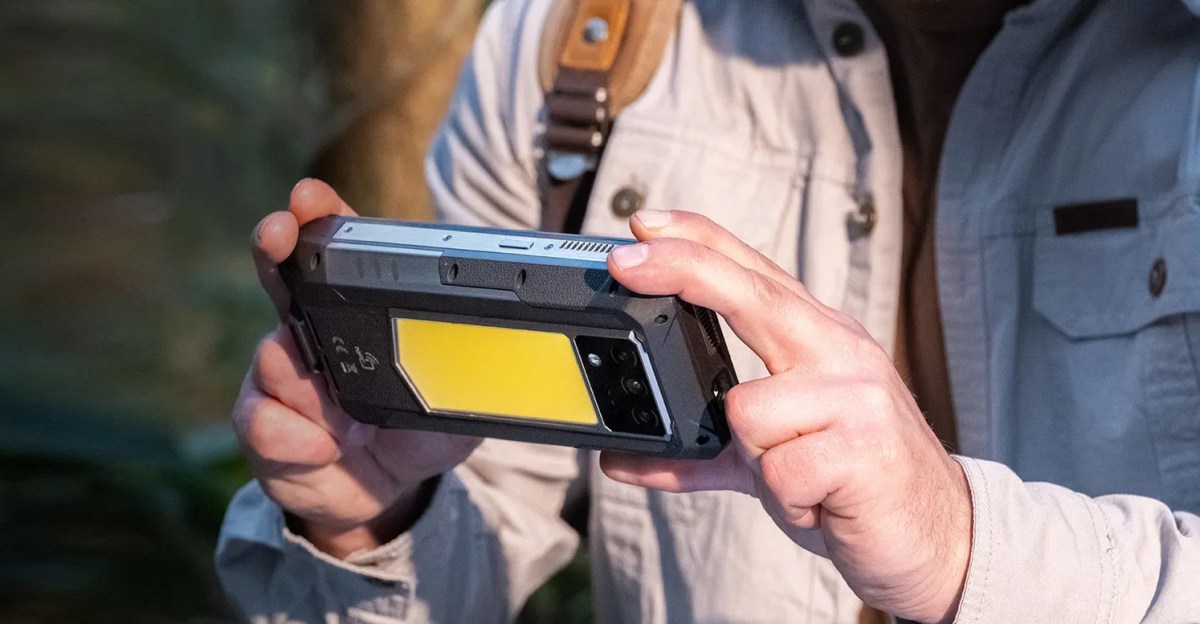Unveiling the Future: Can a 1.9-Pound Smartphone Redefine Battery Life?
In an era where smartphones dictate the pace of our daily lives, the quest for longer battery life seems never-ending. A groundbreaking innovation is making waves in the tech community: a smartphone weighing just 1.9 pounds, boasting an astonishing six-month standby battery life. This revolutionary device not only captures attention but also prompts an important question—can it truly redefine our expectations for mobile technology and battery efficiency?
The Promise of Extended Battery Life
Battery life has long been a significant concern for smartphone users. With constant usage, from social media scrolling to streaming videos, the demand for power has skyrocketed. Traditional smartphones often struggle to last a full day without a charge, leading users to carry portable chargers and search for outlets wherever they go. The advent of a smartphone with a six-month standby battery life presents a tantalizing solution to this pervasive issue.
Imagine having a device that, when fully charged, could last for months without needing a power outlet. This isn’t just a dream—it’s becoming a reality. The implications of such technology extend beyond convenience; they could potentially alter how we interact with our devices and the world around us.
How Is This Possible?
The magic behind this smartphone’s exceptional battery life lies in a combination of advanced technologies:
- Next-Gen Battery Technology: The smartphone is likely utilizing cutting-edge battery chemistry, such as solid-state batteries or lithium-sulfur batteries, known for their higher energy density and longevity compared to traditional lithium-ion batteries.
- Energy-Efficient Components: The device is expected to feature energy-efficient processors and displays, which consume significantly less power without sacrificing performance. This efficiency is crucial in extending the overall battery life.
- Smart Energy Management: Intelligent software algorithms can optimize battery usage based on user behavior, ensuring that the most power-hungry applications are managed effectively.
Redefining User Expectations
The introduction of a smartphone with such remarkable battery life could fundamentally change user expectations. Here’s how:
- Freedom from Charging: Users would no longer be tethered to charging cables, granting them a newfound freedom to use their devices without the constant worry of battery depletion.
- Enhanced Portability: With a lighter and more efficient device, users can enjoy greater portability without the need for bulky power banks or chargers.
- Environmental Impact: Longer-lasting batteries could reduce electronic waste, as consumers would not need to replace their devices as frequently. This shift would align with growing environmental concerns surrounding tech consumption.
Challenges Ahead
While the idea of a smartphone with a six-month battery life is enticing, challenges remain. Manufacturers must overcome several hurdles:
- Cost of Production: Advanced battery technologies and energy-efficient components often come with a higher price tag. Consumers may face increased costs as a result.
- Market Acceptance: Transitioning from traditional smartphones to a new paradigm of battery life requires consumer education and acceptance, which can take time.
- Technological Limitations: While progress is being made, there are still limitations in battery technology that may hinder widespread adoption of such devices.
Impacts on Mobile Technology
The potential introduction of a smartphone with such impressive battery life could have far-reaching effects on the entire mobile technology landscape:
- Innovation Drive: Competing manufacturers may be compelled to innovate further, leading to breakthroughs in battery technology and energy efficiency across the board.
- Shift in Consumer Behavior: Users may begin to prioritize battery life over other features, influencing future smartphone design and marketing strategies.
- Integration of New Features: With less concern over battery life, manufacturers might introduce more power-intensive features, such as enhanced augmented reality capabilities or advanced AI functionalities.
A Glimpse into the Future
As we look forward, the vision of a smartphone with a six-month battery life is not just a fantasy. It represents a significant leap in how we think about mobile technology. As consumers become more reliant on their devices for both personal and professional use, the demand for longer-lasting power will only grow. The success of this innovative smartphone could set a new standard in the industry, compelling manufacturers to rethink their approaches to battery design and energy management.
In addition to improving user experience, this shift could also inspire a broader conversation about sustainability in tech. With increasing awareness of environmental issues, consumers are starting to seek out products that contribute to a more sustainable future. A smartphone capable of six-month battery life not only addresses user convenience but also aligns with eco-conscious values.
Conclusion
The unveiling of a 1.9-pound smartphone with six-month standby battery life is an exciting development that has the potential to redefine our expectations for battery efficiency. By addressing long-standing issues related to battery life, this innovative device could transform how we interact with technology. As we embrace this new era of mobile devices, one can only hope that this groundbreaking advancement marks the beginning of a series of innovations that prioritize both performance and sustainability.
As we stand on the cusp of this exciting future, the question remains: Are we ready to embrace a world where our smartphones can last for months at a time? Only time will tell, but the possibilities are undeniably thrilling.
See more Future Tech Daily

